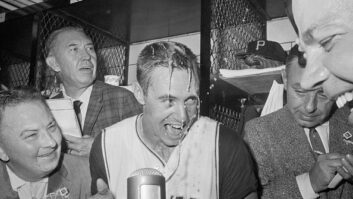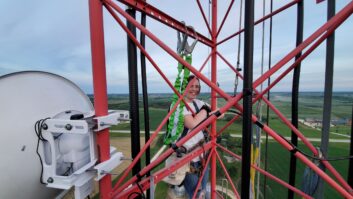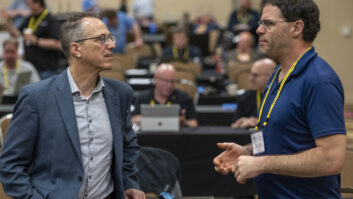The life and career of Clyde Haehnle were intertwined with the development of broadcasting in Cincinnati, first as an engineer and later as an historian. Haehnle died Sunday at the age of 95.

According to a story by local station WVXU, Haehnle studied electrical engineering at the University of Cincinnati after graduating from Withrow High School. While at UC, he did a co-op at the Crosley Corporation. His first assignment was with America’s only foray into super-power AM transmitters, at the WLW AM transmitter on Tylersville Road in Mason, Ohio. The government gave station owner Crosley a special authorization to experiment with broadcasting 500,000 watts from 1934 to 1943.
In 1944 he was part of the team at Crosley that designed and built the Voice of America Bethany, Ohio, transmitting station that operated for five decades.
According to the website of the National Voice of America Museum of Broadcasting, “The rhombic antenna design requiring extensive mathematical calculations fell to Mr. Haehnle. His work accomplished with pencil, paper and a slide rule resulted in some of the most efficient antenna arrays ever built and enabled the VOA programs transmitted from the hilltop north of Cincinnati to be heard by eager listeners worldwide.”
While at Crosley, he was responsible for shortwave engineering, development of new AM broadcast transmitter technology and development of television stations. He was named AVCO vice president in 1965.
[Read more: “Museums Put VOA Bethany Site Back on Map” (2012)]
Later, as vice president of engineering at Crosley/AVCO during the 1950s, he was responsible for bringing the first color TV broadcasts to Cincinnati. Haehnle also served on the committee that planned and built the Crosley Telecommunications Center in Cincinnati, home of WCET-TV 48, along with Cincinnati Public Radio’s WVXU(FM) and WGUC(FM). In the end, he was Crosley’s final employee, selling off all company’s the assets and property in 1976.
Haehnle continued to be active in electronics into his 90s, and held many patents in electronic technology. His leadership and support led to the founding of the National Voice of America Museum of Broadcasting, at the site of the Bethany station he helped to build many years before.
A statement on the museum website describes him as one of its major leaders and benefactors and “the driving force” behind the institution. The museum said it plans a celebration of Haehnle’s life this spring.







